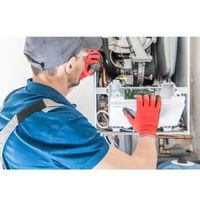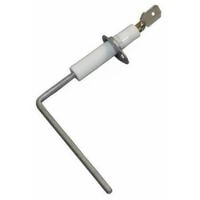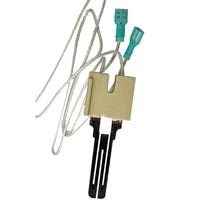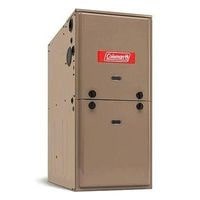Coleman Furnace Not Heating. In your home, a Coleman Furnace isn’t running properly, and you don’t want to call a professional contractor to come to fix it for you.
There’s no need to worry because there are some things you can try on your own first before hiring a specialist.
Take a deep breath and be patient because checking out alternative solutions are sometimes necessary before tackling any problems within your home.
Take a look at these great tips below before contacting a professional with specific expertise in this area.
Coleman Furnace Not Heating

Dirty filters are a major cause of furnace problems. Dust and dirt restrict airflow, and if a filter gets clogged, the heat exchanger will overheat and shut off too quickly, and your house won’t warm up. If the blower is running, but no heat is coming out, replace the filter.
Here we discuss some problems of the Coleman furnace when it is not heating
Assemblies For Gas Valves
The gas valve opens in order to allow gas to flow into the burner. The valve in your furnace may malfunction or become stuck, which in turn could lead to your furnace not heating up.
In order to test if a valve is working, you will need to use a multimeter and make sure that there is continuity in the circuit. When you discover that it does not exist, you need to replace it so that you can keep your home warm.
Issue With Pressure Switch
A pressure switch in a gas oven helps the pilot light turn on and stay lit. The pilot light is lit by airflow, which closes the switch. When the pilot light is lit, gas flows through the burners to heat the oven.
For example, if a gas oven has enough airflow, but the pilot light won’t stay lit, it may be an indication that there’s no gas flowing.
Test your pressure switch with a multimeter to see if it has continuity. If there isn’t continuity, replace it with a new switch.
Problem With Wall Thermostat
A wall thermostat is a device used to regulate the temperature of a room by controlling electrical power supplied to heating, ventilation, and air-conditioning equipment.
By conducting a continuity test on the system’s wall thermostat with a multimeter, you’ll be able to determine if there are any issues with the established electrical connection.
If any issues are discovered, it shall be necessary to replace the wall thermostat so that operation can resume as normally without risk of overheating or damage to the HVAC system or its property for example.
Switch To Limit Flame Rollout
The flame rollout switch is used to measure the heat surrounding the burners. If it detects that there isn’t enough air being drawn in through the burners or that the exhaust vent is obstructed, it will automatically cause the system to halt ignition and prevent overheating.
Test continuity with a multimeter to determine if it is defective. It is a good idea to replace your flame rollout switch if it fails to have continuity and you can’t reset it.
Insufficient ventilation or obstructions in the exhaust vent can lead to poor airflow through the burner of a furnace. Double-check to make sure your furnace’s exhaust vent isn’t blocked and that it is placed in an area with good ventilation.
Motor For Draft Inducers
The draft inducer motor of the furnace draws air into the heat exchanger and then drains it out the flue. The pressure switch senses a change in pressure and closes a switch to signal the control board that the furnace has proper airflow.
If the draft inducer motor is defective, it may be unable to close the pressure switch, causing the ignition to stall and your furnace to shut off after a few minutes.
If igniting stalls, your furnace will shut off. If you can’t engage your draft inducer motor on ultimately results in this problem, replace it.
Defective Flame Sensor

A flame sensor monitors the burner to detect whether or not a flame is present. If the flame sensor is dirty, it might fail to detect a flame.
If the flame sensor does not detect a flame, the control board will shut off voltage to the gas valve to prevent heat from escaping.
The best way to fix this problem is by simply cleaning all of the visible filth off of the sensor with an abrasive pad.
If after doing this there is still no change then you should try replacing the sensor entirely in order to return your furnace back up and running at full capacity.
Faulty Igniter

As soon as the igniter ignites the gas, it glows bright orange. In the event that the igniter fails or cracks, the furnace will not be able to heat up due to the lack of gas.
Check if your igniter is faulty or not by removing it, inspecting it for cracks, replacing it if it is cracked; using a multimeter to test the igniter continuity, replacing it.
If it is not having continuity; otherwise, reinstall the igniter after you have cleaned off any debris that accumulated during the removal.
Coleman Furnace Not Heating
Related Guides
